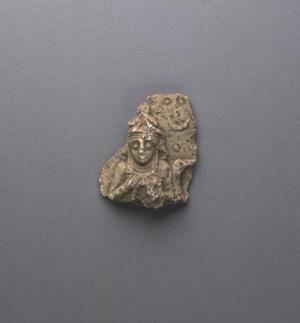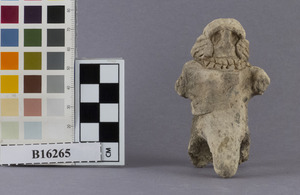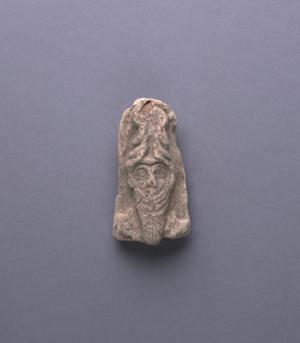Ur, Iraq
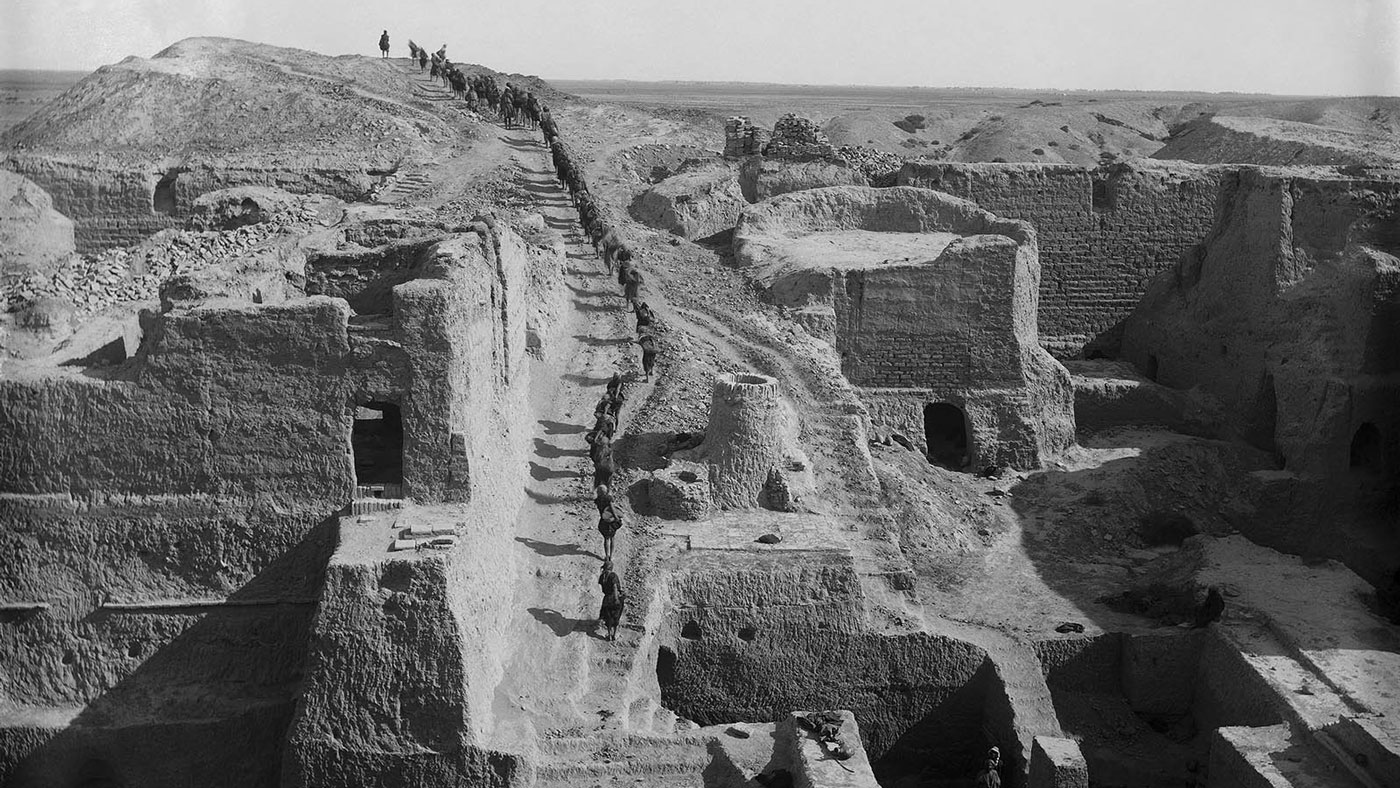
Located in southern Iraq, near the former northern limits of the Persian Gulf, Ur was one of the most famous archaeological excavations—along with Tutankhamun’s tomb in Egypt—during the early 20th century. Frequently described in the popular press, the work at Ur brought the magic of archaeology to life, particularly by tying the discoveries into familiar biblical stories. Between 1922 and 1934, the Joint Expedition of the British Museum and the Penn Museum was directed by C. Leonard Woolley and uncovered some of the most well-known and celebrated art from ancient Mesopotamia. These finds were divided between the two partner institutions (25% each) and the Baghdad Museum in Iraq (50%).
- Object[1,239]
- babylonian[33]
- near eastern[1,206]
- 3D Model[1]
- amulet[2]
- animal figurine[126]
- architectural fragment[2]
- axe[2]
- axe mold[1]
- ball[12]
- bead[18]
- bead spacer[2]
- beads[1]
- bird figurine[10]
- brick[4]
- bulla[7]
- cone[1]
- crescent[6]
- cylinder seal[4]
- disk[1]
- drain pipe[4]
- drainpipe[5]
- drawing[1]
- ear plug[1]
- envelope[1]
- equestrian figurine[26]
- figurine[109]
- figurine head[1]
- figurine mold[1]
- foundation cone[1]
- furniture model[31]
- game piece material[5]
- handle[1]
- human figurine[231]
- jar stopper[2]
- jewelry mold[9]
- knob[1]
- loom weight[11]
- macehead[2]
- mask fragment[1]
- model[38]
- nail[3]
- object[10]
- ornament[1]
- pendant[1]
- plaque[3]
- rattle[20]
- relief[1]
- rhyton[1]
- scraper[2]
- sealing[406]
- sherd[1]
- sickle[12]
- sickle fragment[1]
- spatula[1]
- spindle whorl[28]
- spout[1]
- stamp seal[2]
- statuette[1]
- token[12]
- vessel[2]
- vessel fragment[2]
- wall[1]
- wall cone[45]
- wall cones[5]
- wall nail[19]
- weight[10]
- wheel[6]
- diqdiqqeh[2]
- iraq[1,236]
- ishan el-hamra[1]
- reijiba[1]
- ur[1,239]
- akkadian[1]
- assyrian[2]
- cassite[1]
- early dynastic i[80]
- early dynastic ii[80]
- early dynastic iiib[5]
- early old babylonian period[16]
- isin-larsa[1]
- jemdet nasr period[1]
- larsa[10]
- late al 'ubaid[1]
- minor dynasty[1]
- neo-assyrian period[2]
- neo-babylonian[5]
- neo-babylonian period[2]
- old akkadian period[1]
- old babylonian period[5]
- parthian[1]
- persian period[1]
- post agade[1]
- pre-flood[6]
- prehistoric[13]
- ubaid[1]
- ubaid period[6]
- ur iii[12]
- babylonian[1]
- persian[1]
- 3.5 m in rubbish of pit a[1]
- a.h.[1]
- a.h. above house 24[1]
- a.h. early, a.h. neo-babylonian[2]
- a.h. house ii below top level[1]
- a.h. house ii, level i, chapel -- street between house i and ii, 4, h, -- b.c. top filling.[1]
- a.h. house ii, level i, chapel -- street between house i and ii, 4, h. -- b.c. top filling[1]
- a.h. house iii[2]
- a.h. lower level ii[1]
- a.h. upper level[1]
- a.h., against neo-babylonian wall[1]
- a.h., floor level, in # 15 paternoster row[1]
- b.c. against se wall of bur-sin's se annex[1]
- b.c. in filling below floor of intramural chamber of temenos wall[1]
- b.c. in ruins of lrsa houses[1]
- b.c., below temenos wall chamber[1]
- b.c., upper levels, ruins of house 30/c[1]
- bc house, c level[1]
- bc. east of corner top level[1]
- diqdiqqeh[11]
- filling of pg 1524[1]
- floor of house nw of r.c. 2; level ii; room with fallen wal. a.h. house iii[1]
- foot of enki temple well near city wall[1]
- found 4.50 m. below brick pavement dated ca. 3100 b.c. in the prehistorical settlement. pg. n.w.[1]
- found 5 1/2 to 6 m. below brick pavement dated ca. 3100 b.c. in the prehistorical settlement. transition from post to pre flood levels. p.g. n.w.[2]
- found 6 to 7 m. below brick pavement dated ca. 3100 b.c. in the prehistorical settlement. level of the pre flood period. pg. n.w.[4]
- found 7 1/2 to 8 m. below brick pavement dated ca. 3100 b.c. in the prehistoric settlement. p.g. n.w.[7]
- found 7 to 7 1/2 m. below brick pavement dated ca. 3100 b.c. in the prehistoric settlement. p.g. n.w.[5]
- foundation box, ne gates of ad[1]
- g 228, a.h.[1]
- in situ in ningal[1]
- isin-larsa[1]
- l h, loose in top soil[1]
- larsa rubbish pg[1]
- larsa rubbish pit. pg[1]
- loose in cemetery soil.[1]
- n n c f, house 3, lower level[1]
- n n c f, neo-babylonian level[1]
- n.h. top level (persian level)[1]
- of late al'ubaid date[1]
- p g 1931[1]
- p g 1932, house level rubbish[2]
- p.g. xz 1844 pit f[1]
- persian [?][1]
- pft - 900[1]
- pft 1000 to 1040[1]
- pft 1200[1]
- pft 1250[1]
- pft level 1200[3]
- pft level 1220[1]
- pft, level - 1250[1]
- pg cemetary area 900 down[1]
- room i, house 3, a.h.[1]
- room i, house 3, a.h.?[1]
- ubaid[1]
- under pavement level close to grave at s.w. 1[1]
- ziggurat n.w. 1931, level 3, under pavement and wall foundation of room 4 neb. corner fort site[8]
- ziggurat n.w. 1931, level 3, under pavement and wall foundation of room 4, neb. corner, fort site[1]
- altar[1]
- animal[34]
- animal head[2]
- animals[3]
- antelope[5]
- antelope?[1]
- ass?[1]
- bearded god[7]
- bearded man[13]
- bed[6]
- bird[9]
- bird head[1]
- bird head?[1]
- bison[1]
- boat[10]
- branch[1]
- bull[11]
- bull?[19]
- bulls?[22]
- bust[2]
- camel[6]
- camel?[2]
- chair[7]
- chariot[6]
- cheetah[1]
- child[12]
- club[4]
- cow?[1]
- crescent[3]
- cross[1]
- cup[1]
- deer[2]
- deity[4]
- demon[2]
- dog[7]
- dog?[27]
- dogs?[22]
- dove[1]
- drum[1]
- duck[3]
- eabani[2]
- eagle[6]
- emblems[1]
- enkidu?[2]
- feline[1]
- female[3]
- female head[1]
- figure[1]
- fish[2]
- frog[1]
- fruit?[1]
- gateway[1]
- geometric pattern[1]
- god[9]
- goddess[8]
- gods[4]
- greyhound[1]
- hedgehog?[1]
- horse[9]
- horse head[8]
- human figure[37]
- human head[4]
- human leg[1]
- hut[1]
- hut?[1]
- ibex[2]
- ishtar[1]
- ishtar?[2]
- jar?[1]
- lion[12]
- man[35]
- mask[6]
- musician[5]
- nude[6]
- nude woman[93]
- pictograph[2]
- pig[6]
- ram[3]
- rider[12]
- rosette[2]
- roundel[2]
- scorpion[4]
- seated goddess[19]
- sheep[6]
- sheep?[45]
- snake[4]
- standing figure[2]
- standing goddess[7]
- star[3]
- stars[2]
- table[17]
- tree[2]
- twin[2]
- twins[3]
- vase[2]
- war god[5]
- warrior[3]
- wheel[12]
- woman[56]
- worshipper[2]
- actual citation[60]
1 - 30 of 1,239 Records
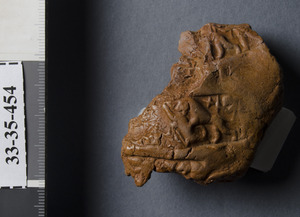
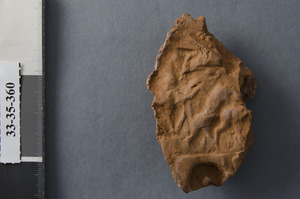


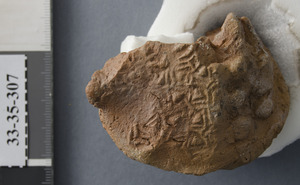

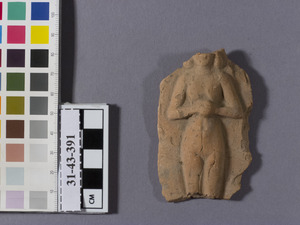



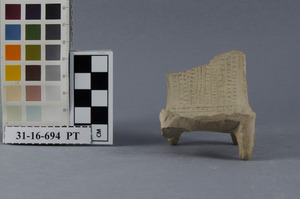
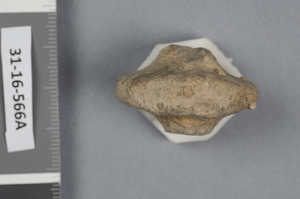
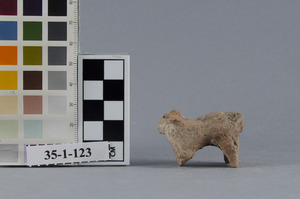

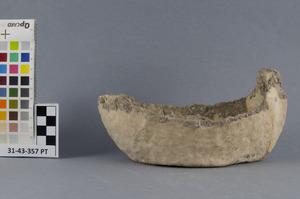
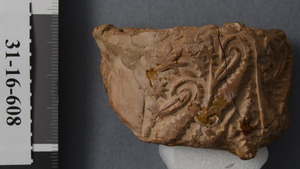
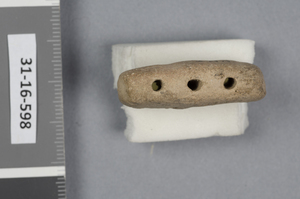
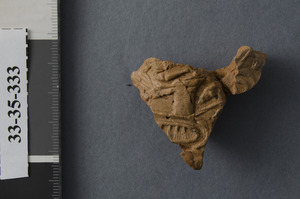
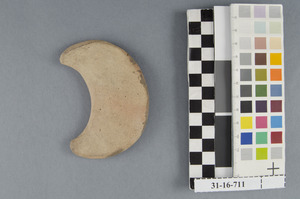
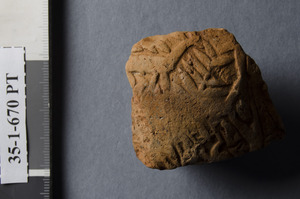
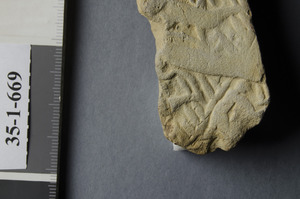
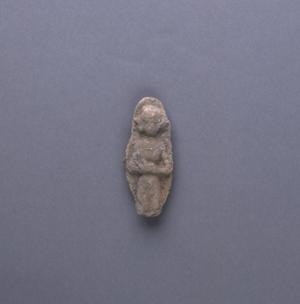
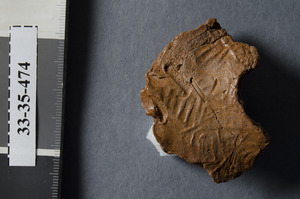

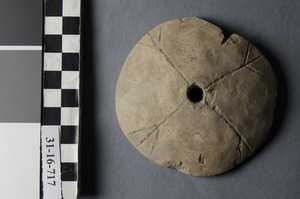

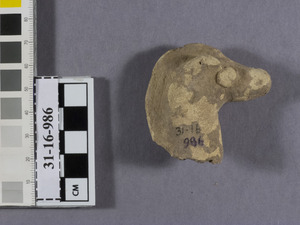
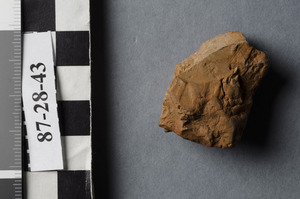
1 - 30 of 1,239 Records


